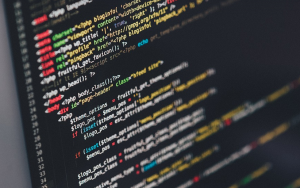
The Fascinating World of Chemical Reactions
Have you ever wondered how scientists create new materials, break down old ones, or even understand how our bodies work? The answers often lie in the fascinating world of chemistry. And at the heart of this world are **chemical reactions**, which involve changes in the composition of matter.
Imagine a recipe for baking a cake. You have ingredients (like flour, sugar, and eggs) that need to be combined and stirred in specific ways to create something new – a delicious cake! In chemistry, these “ingredients” are called **reactants**, and the resulting product is a **new substance** known as the **product**. The process of combining reactants into products through chemical reactions is called a **chemical reaction**.
But what happens when we don’t have all the ingredients? Or sometimes even more than one ingredient is involved? This is where chemical equations come in!
Chemical equations are like detailed instructions that show us exactly how something changes from one thing to another. They use shorthand symbols and formulas to represent each reactant and product, along with a specific number of atoms being rearranged and transferred during the reaction. This allows us to understand not just what happens, but also *how* much of every ingredient is used up or created.
But how do we write these equations? The magic lies in **balancing the chemical equation**. Balancing ensures that the number of atoms (or molecules) of each element on both sides of the equation is equal. This might sound complicated, but it’s really just a matter of making sure the total amount of every “ingredient” remains the same.
Balancing equations can seem daunting at first, especially when dealing with complex reactions. But if you break it down step-by-step, you’ll discover that it’s actually quite fun and rewarding.
Let’s dive into how to balance chemical equations!
Balancing the Equation
To begin with, let’s look at a simple example: balancing the equation for burning methane (CH4) in oxygen (O2) to form carbon dioxide (CO2) and water (H2O). The unbalanced version of this equation is:
CH4 + O2 → CO2 + H2O
To balance this, we can use the following steps:
1. ** Start with the most complex molecule:** The most complex molecule in this equation is carbon dioxide (CO2). 2. **Balance Carbon:** There’s one carbon atom on both sides of the equation. Make sure we have a single carbon atom in the product and its corresponding number of atoms on the reactant side.
To do this, add two oxygen atoms to the reactant side:
CH4 + O2 → CO2 + H2O
3. **Balance Hydrogen:** There are four hydrogen atoms on both sides. Make sure we have a single hydrogen atom in the product and its corresponding number of atoms on the reactant side.
To do this, add two oxygen atoms to the reactant side:
CH4 + O2 → CO2 + 2H2O
This equation is balanced. If we were to look at the equation and analyze it, you would see that the number of atoms on each side of the reaction are equal.
Why Balancing Equations Matters
Balancing chemical equations is not just a fun exercise; it’s essential in various fields. Here’s why:
- **Understanding Chemical Reactions:** Balance equations to predict how substances react and change, ultimately answering the “how” of a reaction.
- **Developing Chemical Industries:** Industry uses balanced equations to design processes that convert raw materials into the products we use everyday. This includes everything from making plastics and fertilizers, to synthesizing medicines and new materials.
- **Designing Experiments:** Balancing equations ensures accurate results when performing experiments in the lab. It aids in understanding data trends and identifying potential sources of error.
Where to Start
Ready to dive into the world of chemical reactions? Here are a few recommendations for getting started:
- **Start with Simple Examples:** Practice balancing simple equations like burning methane or rusting iron.
- **Use Online Resources and Tutorials:** Many websites, apps, and videos offer step-by-step guidance on balancing chemical equations.
- **Seek Help from a Teacher or Tutor:** Don’t be afraid to ask for help! Teachers can provide valuable guidance and support in understanding the concepts.
Exploring Chemical Equations: A Journey of Discovery
The journey of understanding chemical equations is full of exciting discoveries. Here are some ways to explore this fascinating field:
- **Conduct Experiments:** Experimenting with different substances and their reactions can reveal incredible insights into the nature of chemistry.
- **Use Online Simulation Tools:** Explore virtual labs and simulations that allow you to interact with molecules and observe chemical reactions in action.
- **Learn About the Concepts Behind Balancing Equations: ** Understanding the principles behind balancing equations will make them easier to understand and apply.
Answer Key
The answer key is available in downloadable form on this website.


